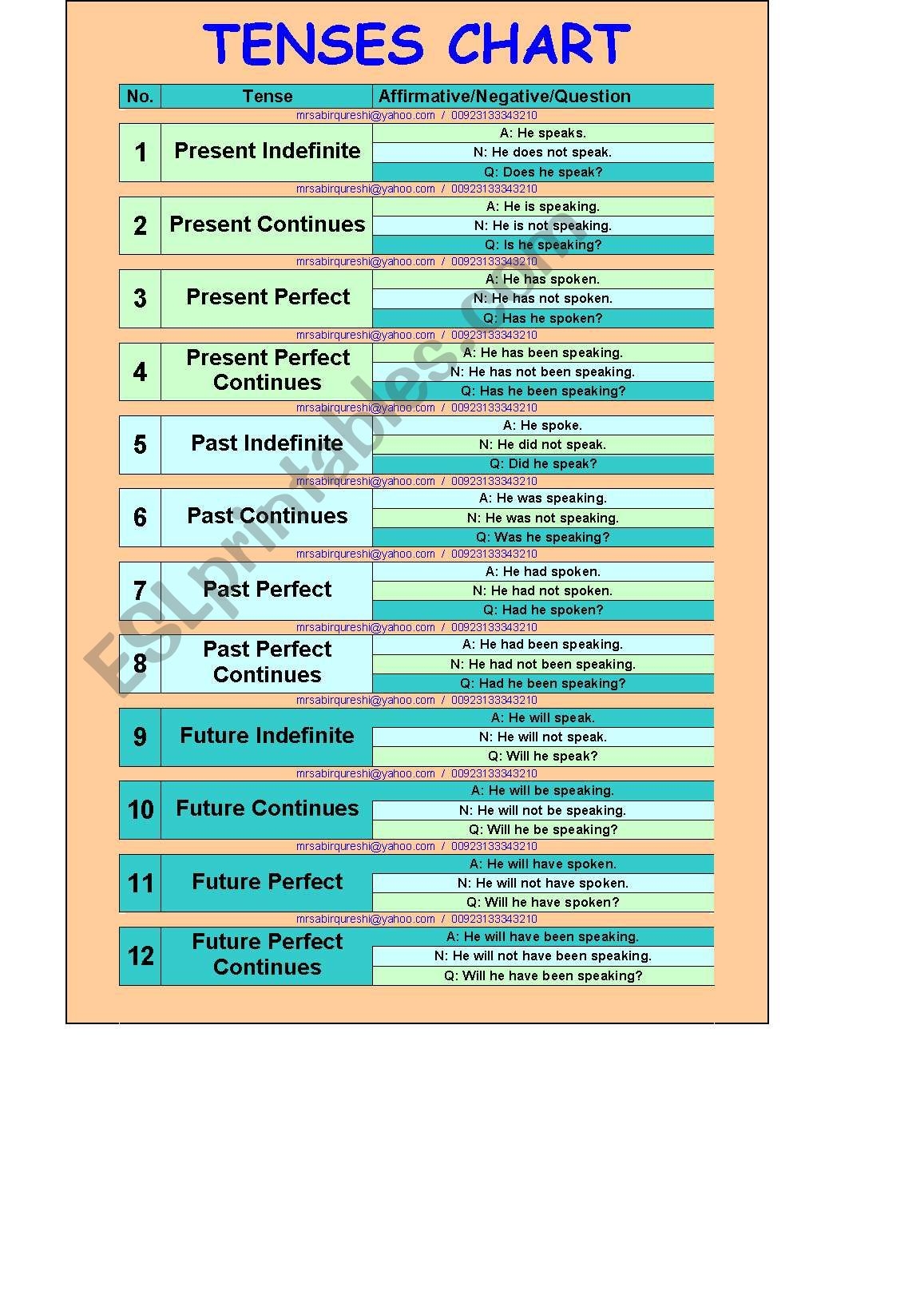Verb tenses are an essential part of grammar that help us understand when an action took place. By using different tenses, we can convey the timing of an action, whether it is in the past, present, or future. There are 12 verb tenses in English, each serving a specific purpose in communication.
Mastering these tenses can greatly improve your writing and speaking skills, allowing you to express yourself more clearly and accurately. In this article, we will explore the 12 verb tenses chart to help you better understand how and when to use each tense.
12 Verb Tenses Chart
1. Simple Present Tense: I play soccer.
2. Present Continuous Tense: I am playing soccer.
3. Present Perfect Tense: I have played soccer.
4. Present Perfect Continuous Tense: I have been playing soccer.
5. Simple Past Tense: I played soccer.
6. Past Continuous Tense: I was playing soccer.
7. Past Perfect Tense: I had played soccer.
8. Past Perfect Continuous Tense: I had been playing soccer.
9. Simple Future Tense: I will play soccer.
10. Future Continuous Tense: I will be playing soccer.
11. Future Perfect Tense: I will have played soccer.
12. Future Perfect Continuous Tense: I will have been playing soccer.
Each of these tenses has a specific structure and usage that can be applied to different situations. By familiarizing yourself with the chart above, you can improve your ability to communicate effectively in English.
Practice using these verb tenses in sentences and conversations to become more comfortable with them. The more you practice, the easier it will be to identify the correct tense to use in any given situation.
Understanding verb tenses is crucial for effective communication. Whether you are writing an essay, giving a presentation, or simply having a conversation, using the appropriate tense can make a significant difference in how your message is received.
By mastering the 12 verb tenses chart and practicing their usage, you can enhance your language skills and become a more confident English speaker. So, next time you sit down to write or speak, remember to consider the appropriate tense to convey your message accurately.
